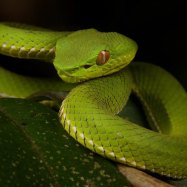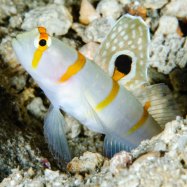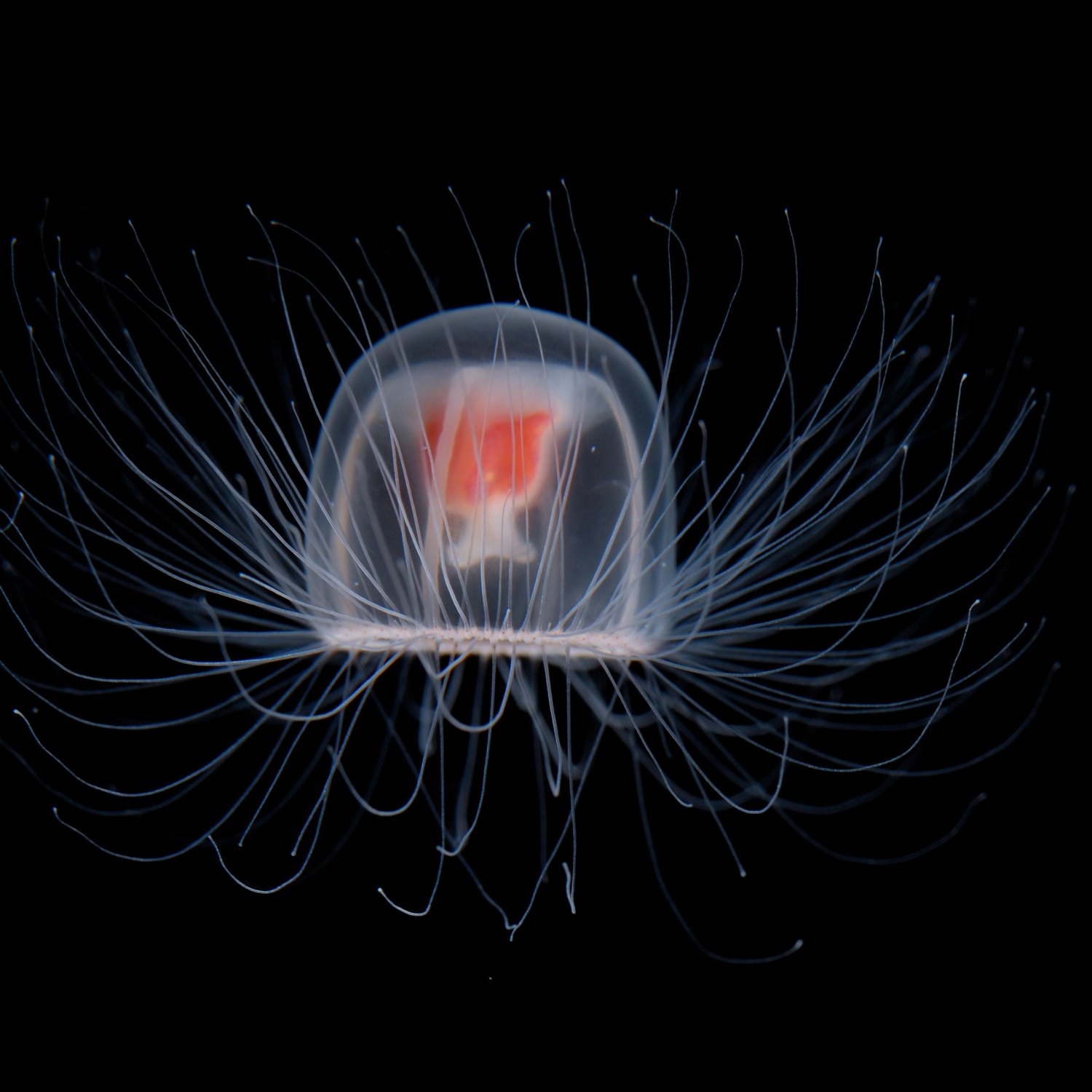
Immortal Jellyfish
5 mm to 4.5 cm
Did you know that the Immortal Jellyfish, also known as the Turritopsis dohrnii, is the only known animal with the ability to reverse aging? This tiny creature, found in oceans around the world, can grow up to 4.5 cm in length and has a bell-shaped body. Belonging to the Oceaniidae family, this fascinating animal may hold the key to unlocking the secrets of immortality. #ImmortalJellyfish #Oceans #AnimalFacts
Animal Details Summary:
Common Name: Immortal Jellyfish
Kingdom: Animalia
Habitat: Marine
The Incredible Immortal Jellyfish: A Fascinating Creature of the Oceans
The vast and mysterious oceans hold countless treasures, and among them is a small yet extraordinary creature that has managed to capture the attention of scientists and researchers: the immortal jellyfish. This tiny, bell-shaped animal, scientifically known as Turritopsis dohrnii, is a unique species that has the potential to live forever, defying the natural cycle of life and death that applies to all other living beings on Earth.The immortal jellyfish, also known as the Benjamin Button jellyfish due to its regenerative abilities, is a fascinating creature that resides in the marine environment. Its name may sound like something out of a science fiction novel, but this creature is very much real and has captivated the scientific community with its remarkable features Immortal Jellyfish. In this article, we will explore the characteristics and behaviors of the immortal jellyfish, shedding light on this extraordinary animal that continues to baffle and amaze us.
Classification and Habitat
The immortal jellyfish belongs to the Animalia kingdom, the same classification as all other animals on Earth. Within this kingdom, it is classified under the Phylum Cnidaria, which includes jellyfish, corals, and sea anemones. This phylum is further divided into several classes, and the immortal jellyfish belongs to the Hydrozoa class, a group of organisms that have both polyp and medusa stages in their life cycle.
The order of the immortal jellyfish is Anthoathecata, and it is a member of the family Oceaniidae. This family includes other types of small jellyfish found in oceans around the world. The immortal jellyfish has a wide geographical distribution and can be found in all the major oceans, including the Pacific, Atlantic, and Indian Oceans. Its specific country of origin is unknown, as it has been observed in different parts of the world.
Appearance and Size
As one may expect from a jellyfish, the immortal jellyfish has a translucent appearance Ibis. Its body is bell-shaped, with a diameter ranging from 5 mm to 4.5 cm. It has tentacles that extend from the edges of its bell-shaped body, which it uses to catch and sting its prey. These tentacles are also transparent and can barely be seen, making the immortal jellyfish almost invisible in the water.
One of the most interesting things about the immortal jellyfish's appearance is its ability to revert back to its polyp stage when it reaches maturity. This process, known as transdifferentiation, is a unique feature that allows the immortal jellyfish to regenerate and avoid aging. We will explain this in more detail later in the article.
Feeding and Behavior
The immortal jellyfish is a carnivorous animal, which means it feeds on other small marine organisms such as plankton, small crustaceans, and other types of jellyfish. Like most jellyfish, it uses stinging cells called nematocysts to capture its prey. These nematocysts contain venom that the immortal jellyfish uses to paralyze its victims, making it easier to consume them.
Interestingly, the immortal jellyfish also has a symbiotic relationship with a type of algae called zooxanthellae. These algae live inside the cells of the jellyfish's body and provide it with energy through photosynthesis. This relationship is mutually beneficial, as the algae receive protection and nutrients from the jellyfish, while the jellyfish gets an additional source of energy.
As for its behavior, the immortal jellyfish is a relatively passive creature. It moves by pulsating its bell-shaped body, allowing it to drift with the ocean's currents. Due to its small size, it is often at the mercy of these currents, making it difficult for the immortal jellyfish to control its movements.
The Immortal Jellyfish's Unique Ability
Now, let's explore the most captivating aspect of the immortal jellyfish: its ability to reverse the aging process. As mentioned earlier, when the immortal jellyfish reaches maturity, it has the unique ability to revert back to its polyp stage. This process is triggered by different environmental factors, such as water temperature, food supply, and pollution levels.
When the immortal jellyfish decides to revert back to its polyp stage, it transforms its bell-shaped body into a tubular shape, allowing it to attach itself to a solid surface, such as a rock or the ocean floor. It then starts to grow into multiple polyps, developing into colonies of genetically identical individuals.
This process of transdifferentiation is a unique characteristic that sets the immortal jellyfish apart from all other known animals. While most animals go through a natural cycle of life and death, the immortal jellyfish can potentially live forever, continuously transforming itself and avoiding the aging process.
The Role of Immortal Jellyfish in the Ecosystem
The immortal jellyfish may be a tiny creature, but it plays a significant role in the marine ecosystem. As a carnivorous animal, it helps to control the population of its prey, preventing them from overpopulating and disrupting the balance of the ecosystem. Additionally, the symbiotic relationship it has with zooxanthellae provides energy and nutrients to other marine organisms, making it an essential part of the food chain.
It is worth noting that while the immortal jellyfish's ability to revert back to its polyp stage is a remarkable feat, it does not make it invincible. Predators such as fish, seals, and larger jellyfish can still prey on the immortal jellyfish, and it is also susceptible to changes in its habitat, which can affect its life cycle.
Conservation and Future Research
Despite its regenerative abilities, the immortal jellyfish is still considered vulnerable to pollution and climate change, which can affect its environment and food supply, ultimately impacting its ability to survive. Therefore, it is essential to preserve the oceans and their inhabitants to ensure the survival of these unique creatures.
Furthermore, scientists and researchers continue to study the immortal jellyfish's biology to understand the mechanisms behind its ability to reverse the aging process fully. This research can provide valuable insights into the aging process and potentially lead to advancements in regenerative medicine.
Conclusion
In conclusion, the immortal jellyfish is a fascinating and mysterious creature that continues to surprise and amaze us. Its ability to revert back to its polyp stage and potentially live forever is a remarkable feat that has captured the attention of the scientific community. As we continue to explore and study the oceans and all its inhabitants, the immortal jellyfish remains a reminder that there is still much we have yet to discover about the natural world.

Immortal Jellyfish
Animal Details Immortal Jellyfish - Scientific Name: Turritopsis dohrnii
- Category: Animals I
- Scientific Name: Turritopsis dohrnii
- Common Name: Immortal Jellyfish
- Kingdom: Animalia
- Phylum: Cnidaria
- Class: Hydrozoa
- Order: Anthoathecata
- Family: Oceaniidae
- Habitat: Marine
- Feeding Method: Carnivorous
- Geographical Distribution: Worldwide
- Country of Origin: Unknown
- Location: Oceans
- Animal Coloration: Translucent
- Body Shape: Bell-shaped
- Length: 5 mm to 4.5 cm
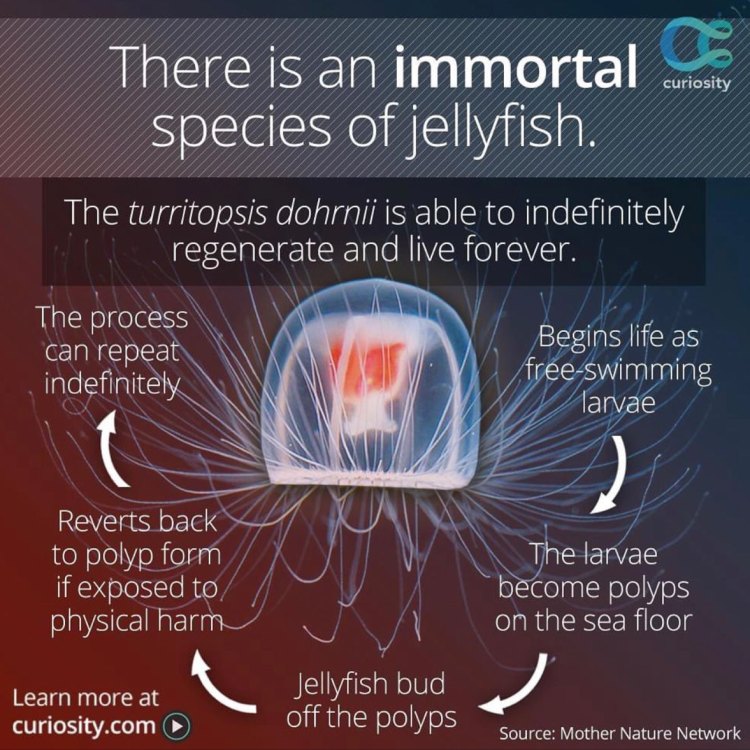
Immortal Jellyfish
- Adult Size: Up to 4.5 cm
- Average Lifespan: Indefinite (potentially immortal)
- Reproduction: Sexual and asexual
- Reproductive Behavior: Budding and sexual reproduction
- Sound or Call:
- Migration Pattern: No migration
- Social Groups: Solitary
- Behavior: Drifts in the water column
- Threats: Predation, pollution
- Conservation Status: Not evaluated
- Impact on Ecosystem: Can outcompete other species
- Human Use: None
- Distinctive Features: Ability to revert back to juvenile stage
- Interesting Facts: Can revert back to a younger stage of development and start its life cycle anew
- Predator: Various jellyfish predators
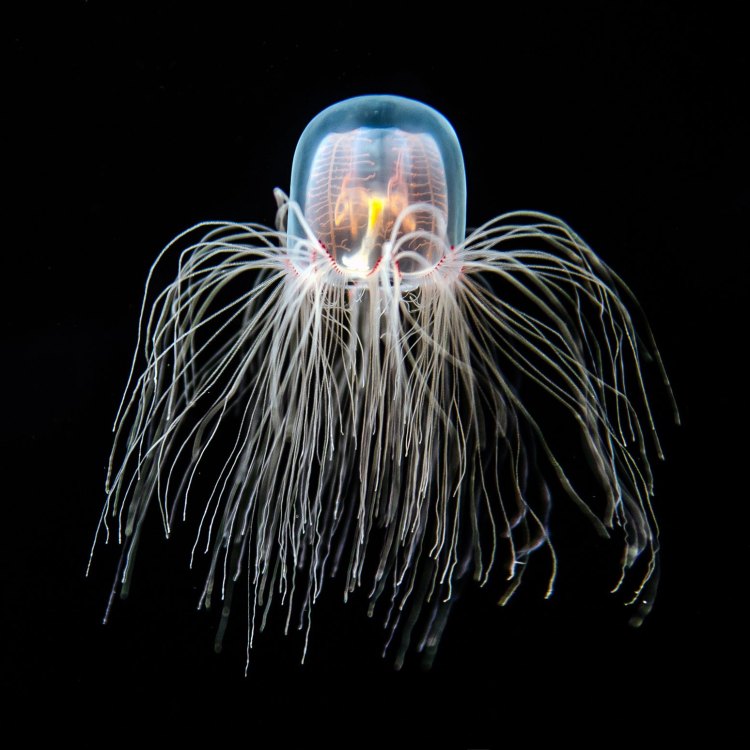
Turritopsis dohrnii
The Mysterious and Fascinating World of the Immortal Jellyfish
Deep in the depths of the ocean lies a creature with an incredible ability – the immortal jellyfish. This small jellyfish, with an average size of only 4.5 cm, has captured the interest and imagination of scientists and marine enthusiasts alike.With its unique ability to revert back to a younger stage of development and essentially begin its life cycle again, the immortal jellyfish has fascinated researchers for decades PeaceOfAnimals.Com. But what exactly is this mysterious creature and how does it manage to cheat death?
Let's delve into the world of the immortal jellyfish and uncover the secrets of this extraordinary organism.
A Life Without End?
The immortal jellyfish, also known as Turritopsis dohrnii, is a species of tiny jellyfish found in the oceans around the world, particularly in tropical and temperate regions. What sets this jellyfish apart from its counterparts is its seemingly never-ending life cycle.While most organisms have a defined lifespan, the immortal jellyfish has the ability to revert back to its juvenile polyp stage after reaching sexual maturity. This means that it can essentially reset its biological clock and start its life cycle anew.
This unique process, known as transdifferentiation, allows the immortal jellyfish to potentially live forever, giving it the nickname "immortal jellyfish."
A Complex Reproduction Process
Like many other jellyfish species, the immortal jellyfish is capable of both sexual and asexual reproduction. However, unlike most other jellyfish, this species exhibits a behavior known as "budding," where new individuals form as outgrowths from the body of the parent medusa.These tiny clones, known as ephyrae, detach from the parent medusa and continue to grow and develop until they reach maturity Impala. At this point, they can produce offspring through sexual reproduction by releasing eggs and sperm into the water.
This unique reproductive behavior is one of the key factors that contribute to the immortal jellyfish's indefinite lifespan.
Drifting Through the Water
The immortal jellyfish is a solitary creature, rarely found in groups or colonies. It spends most of its life floating and drifting in the water column, using its bell-shaped body to propel itself.This drifting behavior makes it difficult to study the species as they can be found in various depths and locations in the ocean. However, their lifespan and unique abilities have caught the attention of researchers and they are now being studied in laboratories around the world.
The Threats to Immortality
Like any other creature, the immortal jellyfish is not invincible. While its ability to rejuvenate may seem like a superpower, the species is still vulnerable to a variety of threats, both natural and human-made.Predation, pollution, and changes in ocean temperatures and acidity are some of the major threats that the immortal jellyfish faces. Its small size and translucent body make it an easy target for predators such as other jellyfish and small fish. The effects of pollution on the species are still not well understood, but it is believed that pollution can disrupt its life cycle and potentially harm its ability to rejuvenate.
The Untapped Potential of the Immortal Jellyfish
Despite its awe-inspiring abilities, the immortal jellyfish has not been evaluated for conservation status. This is because, until recently, its existence was largely unknown to the general public.However, as more and more research is being conducted on the species, scientists have become increasingly aware of the potential impact of the immortal jellyfish on the marine ecosystem.
Being able to revert back to a juvenile stage and start its life cycle anew gives the immortal jellyfish a significant advantage over other species. It can quickly adapt to changing environmental conditions and outcompete other organisms, potentially altering the delicate balance of the marine ecosystem.
The Paradox of Immortality and Human Use
While the immortal jellyfish has captivated the scientific community, it has not caught the attention of humans in terms of commercial and recreational use. This is due to its small size and lack of potential for human consumption.However, the irony lies in the fact that the immortal jellyfish's potential impact on the ecosystem could have serious consequences for human fisheries and aquaculture. As it continues to spread and potentially outcompete other species, it could have detrimental effects on fish populations that humans rely on for food.
The Bottom Line
The immortal jellyfish is truly a unique and enigmatic creature, defying the laws of nature and challenging our understanding of life and death. Its ability to rejuvenate and outcompete other species highlights the intricate and delicate balance of the marine ecosystem.While this extraordinary creature may hold the key to unlocking the secrets of immortality, it also serves as a stark reminder of the need for sustainable practices and conservation efforts to protect the delicate marine environment.
As research on the immortal jellyfish continues, there is no doubt that this species will continue to capture our imaginations and amaze us with its fascinating abilities. Who knows, perhaps one day we will unlock the secrets of this creature's immortality and apply it to our own lives. Until then, we can only marvel at the mysterious and fascinating world of the immortal jellyfish.
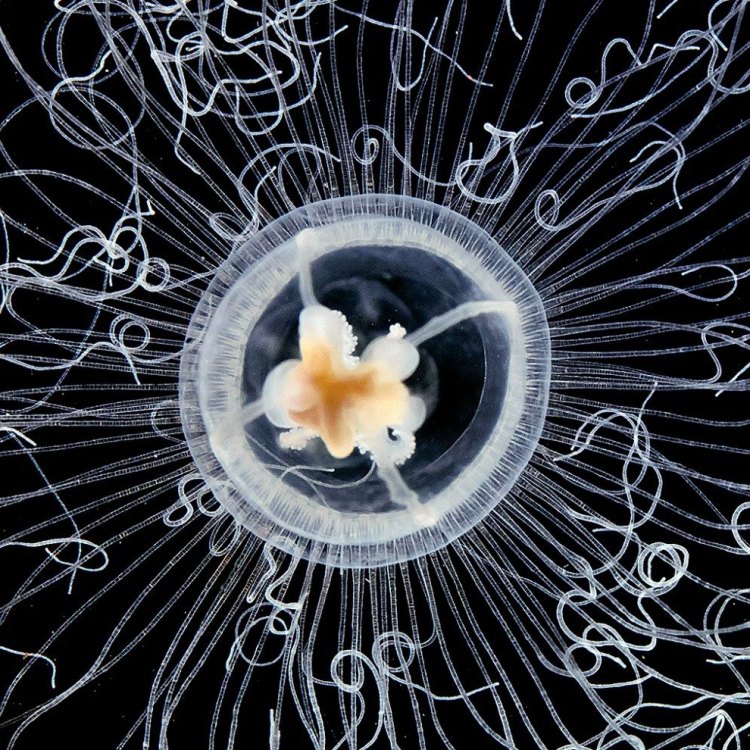
The Incredible Immortal Jellyfish: A Fascinating Creature of the Oceans
Disclaimer: The content provided is for informational purposes only. We cannot guarantee the accuracy of the information on this page 100%. All information provided here may change without prior notice.



